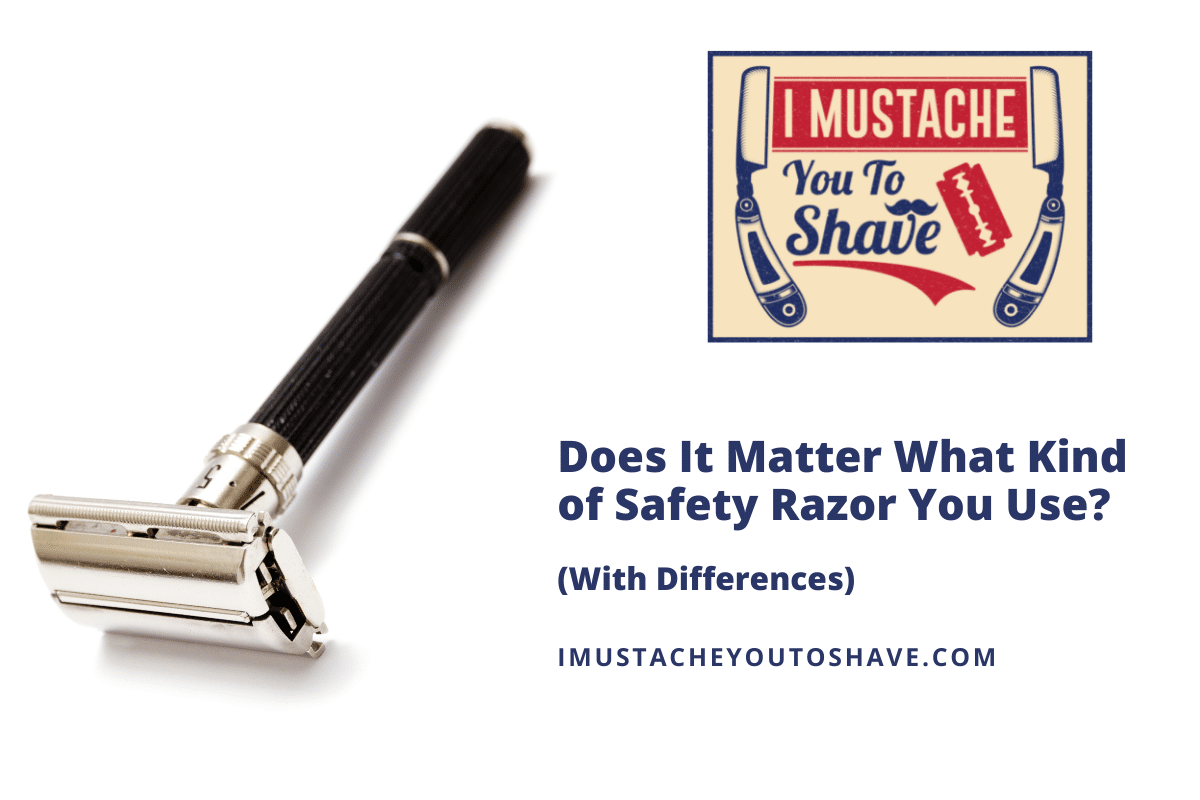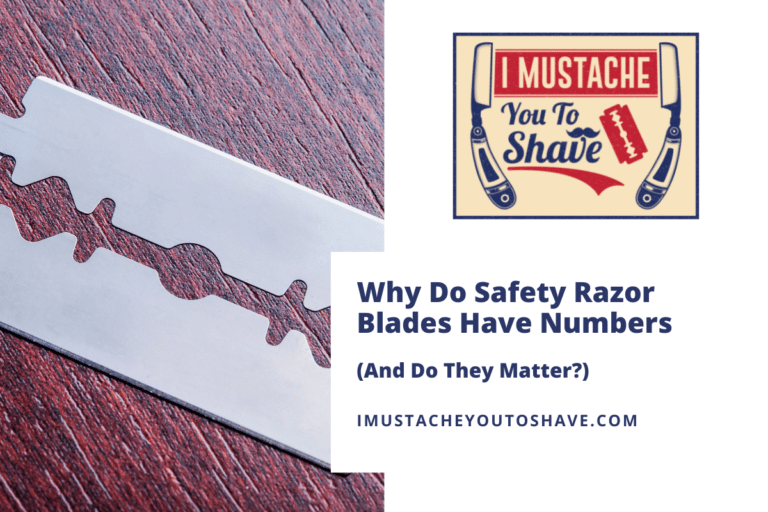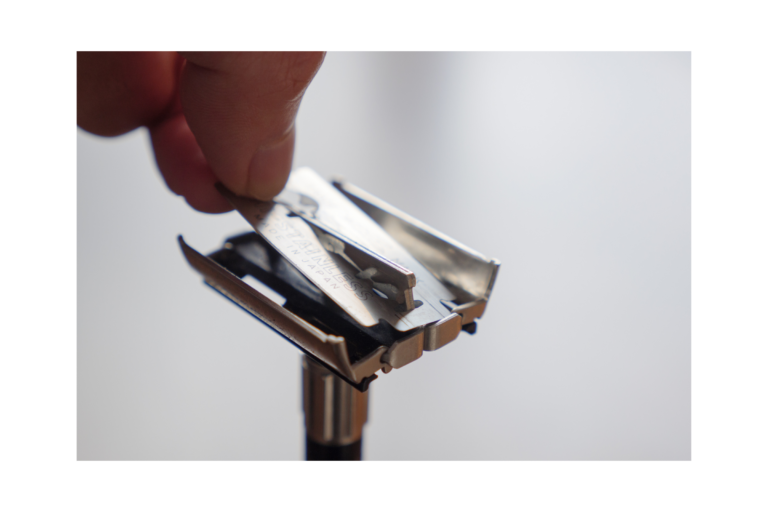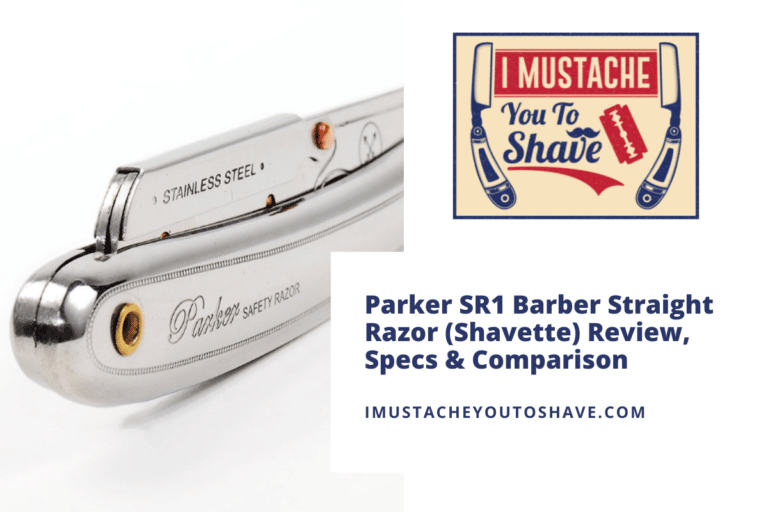Does It Matter What Kind of Safety Razor You Use? (With Differences)
When deciding what kind of safety razor to use, you’re presented with an overwhelming number of choices. How do you know that you’re choosing the best safety razor for a shave?
Some safety razors are designed to be aggressive and efficient and are favored by professional barbers or long-time safety razor users. Other safety razors are more forgiving and provide a bit more “safety” and protection from cutting yourself. Design, comb-style, slant, balance, and blade exposure will all impact a shave experience.
Keep reading to find out the features of and differences in safety razors.
What are the different kinds of safety razor?
A safety razor is a traditional shaving razor that bridges the gap historically and functionally between the straight razor and the more contemporary disposal or multiple-bladed replacement cartridge razors.
There are three main kinds of safety razors: two-piece, three-piece, and butterfly safety razors. Each of these safety razors refers to how the razor secures the blade on the razor head.
Two-piece safety razors usually have the baseplate attached to the handle of the razor. This means that the only two pieces are the head of the razor and the handle. By twisting the base of the handle, you can release the screw that attaches the razor head – and consequently, the razor – to the baseplate and handle.
Three-piece safety razors have a separate handle, baseplate, and razor head parts. All three parts separate to secure the razor blade properly. The three-piece safety razor is the most common razor design and allows for easy cleaning and assembly.
The other safety razor type is the butterfly design. By twisting the base of the razor, the razor head opens up from the middle, similar to butterfly wings, allowing easy access to the razor blade. These razors aren’t as common today. Additionally, they are single-piece construction, meaning you can’t take them apart.
Besides the basic designs of safety razors, there are also different heads on safety razors. The head is the top of the safety razor that holds the blade in place. There are many different types of heads, including scalloped, closed comb, open comb, slanted, and adjustable.
Scalloped Razor
Scalloped razor heads refer to the beveled safety bar that protects your skin from the razor blade.
The scalloped safety razor has a beveled safety bar that offers differing blade exposure depending on how the razor is held.
The scalloped bar is one of the most common razor heads on double-edge and single-edge safety razors. Thanks to the beveled edge, the shaver gets moderate protection from the razor’s edge while still getting plenty of blade exposure for cutting hair.
Closed Comb Razor
Closed comb razors are razors that have a safety bar across the base plate.
This safety bar now has small grooves like the teeth in a comb designed to limit the exposure of the razor blade to your skin. This doesn’t mean that the razor won’t shave efficiently; rather, this kind of razor won’t be as aggressive when shaving.
You will certainly be able to shave with a closed comb razor. There will still be plenty of blade exposure that will allow for a clean shave. Just don’t expect to make any single-pass shaves with a closed comb razor. By sacrificing blade exposure for safety, the closed comb razor makes for a great safety razor.
Open Comb Razor
Open comb razors are considerably different from closed comb razors.
The open comb razor has an even more “comb” look instead of having a safety bar across the razor blade. The comb guides the hair into channels for shaving and allows for more blade exposure.
Because there is more blade exposure on an open comb razor, these safety razors are considered more aggressive.
Open comb razors are a more efficient shaving experience because your skin and hair come into contact with the razor blade more frequently. This means if your hand slips or you aren’t careful, there’s more blade to cut your skin!
Slanted Razor
While slanted razors are one of the rarest razor head types, they can be an interesting alternative to the more traditional razor heads.
Slanted razors have a slanted safety bar that moves at an angle from one side of the razor to the other. One side of the razor has minimal blade exposure, while the other side has plenty of blade exposure.
The reasoning behind slanted razor heads lies in shearing angles. When something is cut at an angle, it can be cut with less force and more precisely. By using a slanted razor, you harness the power of shearing angles.
Adjustable
Adjustable razor heads are a unique razor head that allows you to adjust the blade exposure.
Adjustable razors are great for experienced safety razor shavers. Additionally, adjustable razor heads are suitable for men who shave varying lengths of beards.
If you find yourself shaving your face, scalp, and body, an adjustable razor is a great way to go because you can change the blade exposure depending on the thickness and coarseness of the hair you’re shaving.
Does the type of safety razor you use matter?
Different types of safety razors have benefits and drawbacks.
When considering which type of safety razor to use, be sure to consider if that razor is right for your face, facial hair, and shaving needs. The biggest considerations when picking your safety razor are blade exposure, balance, and construction.
Keep reading to learn how each of these factors can impact your shaving experience.
Blade Exposure
One of the biggest misconceptions about safety-razor shaving is that more blade exposure will result in a better, closer shave.
More blade exposure doesn’t always mean that you’ll have a closer shave. Blade exposure is just one element of your razor that can impact your shaving experience.
One consideration that goes with blade exposure is the type of razor blade that you use. Just like razors, blades have varying levels of aggression and sharpness. If you pair an aggressive razor blade with a closed-comb razor, you may find that your shaving experience is the right balance of efficiency and safety. However, if you pair that same aggressive razor with an open-comb razor, you might find that you cut yourself too often.
For beginners, try to stick to razor blade heads that offer a little more protection than an open-comb razor. If you feel like those aren’t quite cutting it for you, consider using a more aggressive razor blade such as Feather or Wilkinson blades.
If you’re more experienced with a double-edge or single-edge safety razor or have thick, coarse facial hair, you may want to consider using an open comb razor. The open comb razor will guide your hair into the razor’s edge more efficiently.
Balance
One often-overlooked element of finding the right razor for your shaving needs is the balance of the razor.
Balance is how well the razor feels in your hand and includes design elements like weight, handle length, and even construction.
For starters, having a well-balanced razor can be the difference between a relaxing shave and fighting against your razor the whole time. When a razor is balanced, it’ll feel like you aren’t forcing the razor against your face to make contact, but it isn’t so heavy that it tires your hand out.
Like blade exposure, a heavy razor or light razor isn’t always a bad thing.
Instead, think of single elements as components of a larger discussion on weight. If you have a heavy razor with a short handle, maybe that will feel well balanced in your hand. Meanwhile, if you have a light razor with a short handle, it may feel like you need to apply too much pressure for the blade to make contact with your skin.
Construction
The construction of a razor is another important consideration.
When choosing between a two-piece, three-piece, or butterfly razor, the three-piece razor is the easiest to use and maintain.
Two-piece razors are a little harder to clean because the base plate doesn’t separate from the handle. If you don’t clean your razor regularly, soap scum can build up in the hard-to-reach area where the handle meets the baseplate.
Additionally, the butterfly construction can be a little clunky. On occasion, because the razor’s head is divided in half to allow access to the razor blade, butterfly razors can distribute pressure unevenly across the face.
Tips for using a safety razor for the first time
Once you’ve landed on a safety razor that fits your needs, it’s time to put it to use!
When using a safety razor for the first time, follow these tips to ensure you have the best possible shaving experience:
- Make sure your safety razor is assembled correctly
- Ensure the razor blade is properly secured
- Prepare your skin and hair
- Hold your razor properly
- Shave with the grain
- Then shave against the grain
- Finish with a post-shave routine
Make sure your safety razor is assembled correctly
When putting together your safety razor, make sure that you follow the manufacturer’s instructions.
If you don’t have access to these, most razors construction is fairly intuitive:
- Three-piece razor – Start by attaching the baseplate to the handle. This is usually done through a threaded screw. Sometimes, the baseplate won’t be secured until the razor head is screwed into the top.
- Two-piece razor – You usually just need to screw the razor head to the top of the baseplate for two-piece razors. Occasionally, two-piece razors tighten by turning the knob at the bottom of the razor.
- Butterfly razor – You’ll just need to twist open the razor head so that you can install the blade. Be sure to keep reading to see how to properly secure your razor blade in your safety razor.
Ensure the razor blade is properly secured
Making sure that your razor blade is properly secured is important for your first safety razor shave.
If your razor blade isn’t properly installed, you may not be able to shave since the blade won’t be making contact with your face.
One of the most common mistakes is installing the baseplate upside down. Just be sure that when you place the blade in the safety razor, blade exposure pokes out beyond the razor itself.
Additionally, use caution when handling the razor blade. Try to touch it by the flat part or the sides that don’t have the razor’s edge.
Prepare your skin and hair
One of the easiest ways to prepare for your first safety razor shave is to shower and wash your face. When you wash your face, you remove dirt, sweat, and oil from your face, allowing your pores to be clean.
The warm water and steam soften your skin and facial hair. In turn, this will help your first shaving experience be smooth and relaxing. If you want to, you can also apply a pre-shave balm or oil to help lock in moisture on your face.
Be sure not to skip prepping your face for a shave. If you’re in a rush and can’t shower, just make sure you use warm water to wash your face.
After you’ve washed your face, it’s time to apply shaving cream. Whether you’re applying foam or making a lather with a shave brush, you want to make sure your shaving soap is applied liberally across your face. Don’t be afraid to let it sit on your face for a few minutes, either.
Hold your razor properly
Now that your face is ready to shave, you can start thinking about how you will use your razor.
One of the biggest ways to set yourself up for success is remembering how to hold the razor: gently, like a pencil, applying minimal pressure. If you press the razor into your face, you’re more likely to cause irritation or razor burn. By holding the razor with minimal pressure, you allow the razor’s edge to do its job.
When considering shaving angles, you want the razor’s edge to contact your skin at around a 30° angle. This angle allows the safety bar or comb to move out of the way and expose the blade to your skin and hair.
Shave with the grain
As you begin to draw the razor across your face, try to shave with the grain of your hair. To clarify, this means drawing your razor in the same direction that your hair grows.
Shaving with the grain is a great way to get a feel for how the razor moves across your face and cuts hair. Be sure to use smooth and steady strokes as you shave with the grain of your hair.
Once all the shaving soap has been removed from your face, it’s time to lather up again for your second pass.
Shave against the grain
For the second pass, try shaving against or across the grain. This simply means shaving across the direction that your hair grows.
Shaving against the grain can allow you to cut closer to the skin and get a closer shave.
However, if you’re still getting the hang of shaving with a safety razor, you can do another pass going with the grain. You might need to make an additional pass if you’re only shaving with the grain, but it sure beats giving yourself a razor burn or a cut!
Finish with a post-shave routine
To finish off your first shave experience, use cold water to wash any soap residue off of your face.
Using cold water can feel soothing, especially after your skin has gone through so much. Once your skin is free of soap, apply aftershave or balm to your face.







